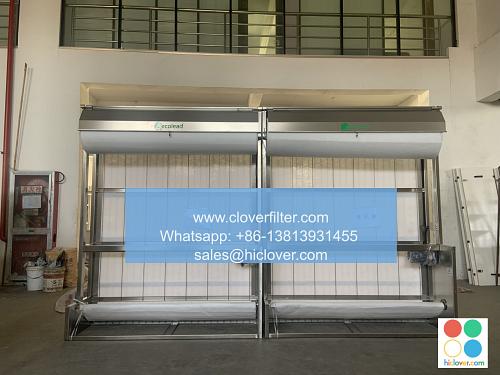The Top 5 Ways to Improve Indoor Air Quality with Air Filters

Indoor air pollution is a significant concern for homeowners, commercial building owners, and facility managers alike, as it can have serious health implications for occupants. Effectively removing pollutants, allergens, and contaminants from the air is crucial for maintaining a healthy indoor environment. One of the most efficient ways to achieve this is by utilizing high-quality air filters. In this article, we will explore the top 5 ways to improve indoor air quality with air filters, highlighting various application areas and technologies.
1. HEPA Filter Technology: The Gold Standard for Indoor Air Purification
HEPA (High Efficiency Particulate Air) filters are widely recognized as the most effective type of air filter for removing 99.97% of particles as small as 0.3 microns, including dust, pollen, mold, and bacteria. By incorporating HEPA filter technology into your indoor air purification system, you can significantly reduce the concentration of airborne pollutants and create a healthier indoor environment. HEPA filters are particularly beneficial for individuals with allergies or respiratory issues, as they can help alleviate symptoms and improve overall well-being.
2. Activated Carbon Filters: Removing VOCs and Odors
Activated carbon filters are designed to capture volatile organic compounds (VOCs), odors, and gases that can emanate from household products, building materials, and outdoor pollution. By integrating activated carbon filters into your air purification system, you can effectively remove harmful chemicals and unpleasant odors, creating a cleaner and more comfortable indoor environment. This type of filter is particularly useful for commercial kitchens, healthcare facilities, and industrial settings where VOCs and odors are more prevalent.
3. UV Air Purifiers: Eliminating Bacteria and Viruses
UV air purifiers utilize ultraviolet light to kill bacteria, viruses, and mold that can be present in the air. This type of air purification technology is particularly effective against airborne pathogens that can cause illnesses and infections. By installing UV air purifiers in your indoor space, you can significantly reduce the risk of airborne transmission of diseases, creating a safer and healthier environment for occupants. This technology is commonly used in healthcare facilities, schools, and public buildings where airborne pathogens are a concern.
4. Smart Air Filters: Optimizing Indoor Air Quality with IoT Technology
Smart air filters are equipped with Internet of Things (IoT) technology, allowing for real-time monitoring and optimization of indoor air quality. These advanced air filters can detect pollutant levels, temperature, and humidity, and automatically adjust their performance to ensure optimal indoor air quality. By incorporating smart air filters into your indoor air purification system, you can enjoy a more efficient and effective way to maintain a healthy indoor environment. This technology is particularly useful for commercial buildings, office spaces, and industrial facilities where energy efficiency and cost savings are a priority.
5. Whole-House Air Filtration Systems: Comprehensive Indoor Air Purification
Whole-house air filtration systems are designed to provide comprehensive indoor air purification, covering entire residential or commercial buildings. These systems typically integrate multiple air filtration technologies, including HEPA filters, activated carbon filters, and UV air purifiers. By installing a whole-house air filtration system, you can ensure that every room in your indoor space has clean and healthy air, creating a more comfortable and productive environment for occupants. This type of system is particularly beneficial for large commercial buildings, industrial facilities, and public institutions where indoor air quality is a top priority.
In conclusion, improving indoor air quality with air filters requires a comprehensive approach that considers various application areas and technologies. By incorporating HEPA filter technology, activated carbon filters, UV air purifiers, smart air filters, and whole-house air filtration systems into your indoor air purification strategy, you can create a healthier and more comfortable indoor environment for occupants. Remember to always consult with a qualified professional to determine the best air filtration solution for your specific needs and application area. It looks like you’re ready to start, but I don’t see a specific prompt. What would you like to talk about or ask? I can assist with a wide range of topics, from science and history to entertainment and culture. If you’re feeling stuck, I can also offer some conversation starters. Just let me know what’s on your mind!

